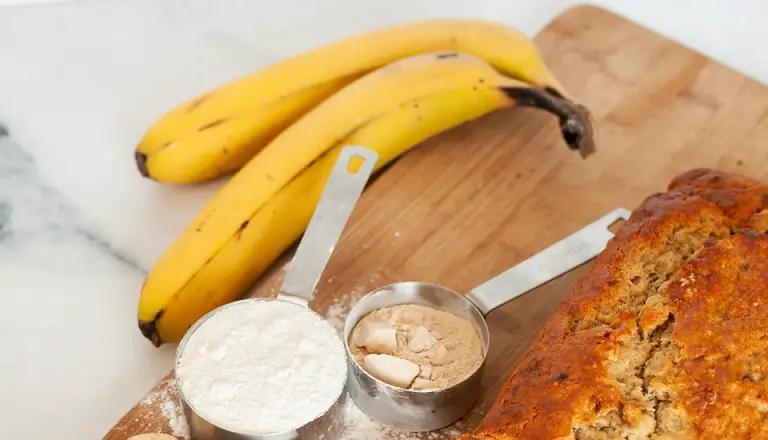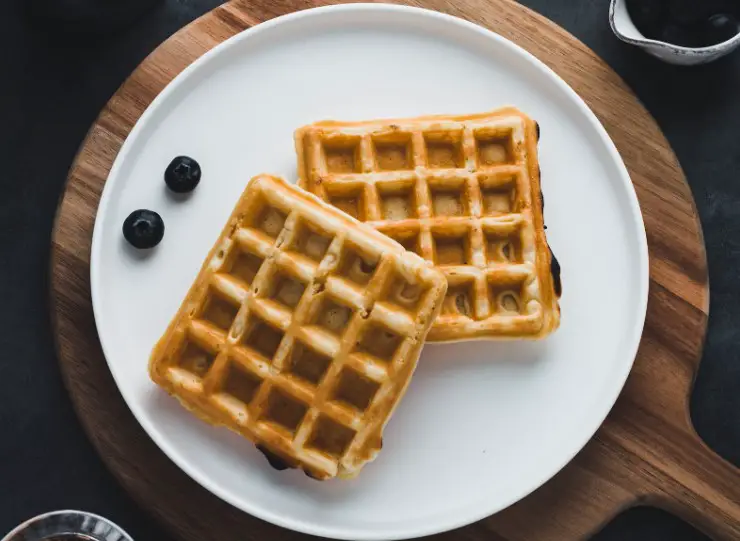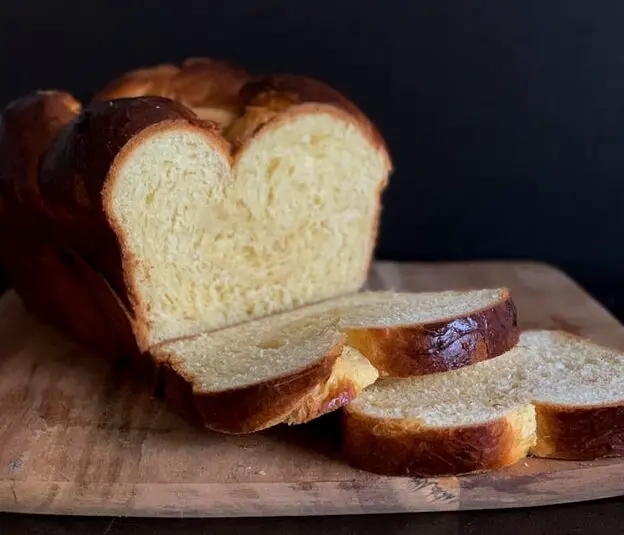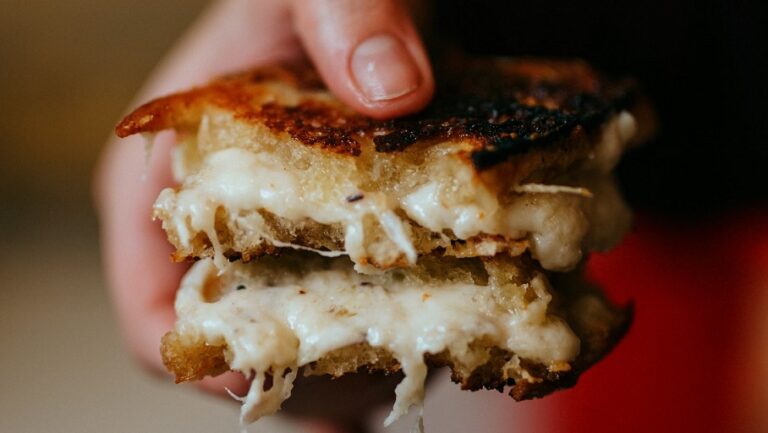Making banana bread is one of my favorite ways to make use of overripe bananas. Have you ever followed the recipe down to a tee only to have the banana bread turned out too dense. I have, and it is a very common problem.
The most common reason why your banana bread is dense is over mixing the batter. Gluten is formed by mixing flour with water. The more you mixed, the more strands of gluten are formed. When baked, these strands will create the dense and gummy structure.
Not over mixing the batter is just one of the ways to preventing a dense banana bread. Let’s get into all the details now.
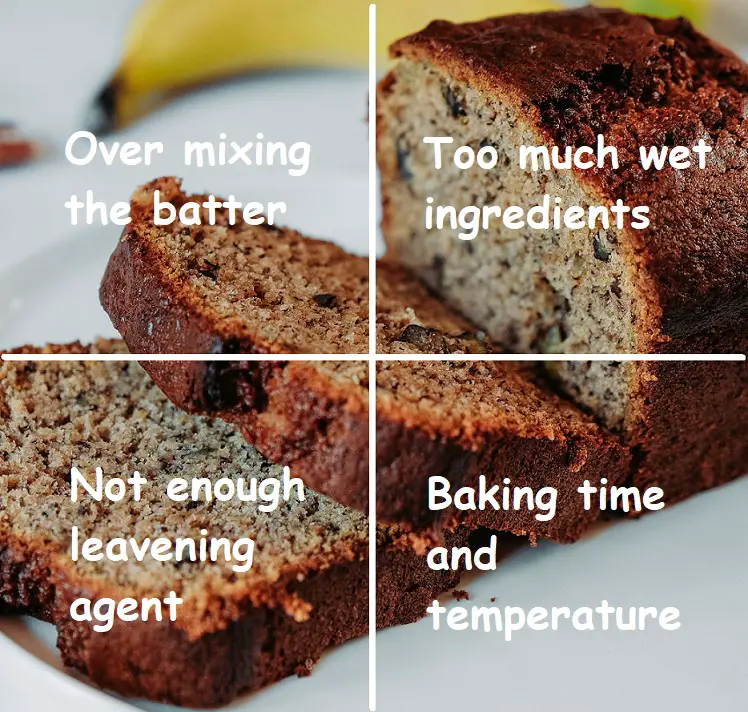
Over Mixing The Batter
As mentioned above, over mixing the batter will result in dense banana bread. Often in quick bread recipes such as banana bread, the instruction will direct to mix until combined.
When mixing the dry ingredient with the wet ones, you want to do it by hand. Do not use a mixer for this task. Use a spatula and gently fold in the mixture together.
What exactly is mixed until combined? As a rule of thumb, I tried to fold in the mixture in less than 10 folds. You will notice that your mixture might still be lumpy after mixing, or you might still see streaks of flour not mixed in, but that is fine.
Too Much Wet Ingredients
It is important to remember that ripe banana is about 70% water content. Sometimes, the recipe would just call for 2 bananas, but you don’t know is it a large, medium or small banana. Obviously, a large banana would have more liquid over a small one.
This is a quick bread ratio that I often refer to: 2 parts flour: 2 parts liquid: 1 part egg: 1 part butter. I would generally classify banana as liquid in this case. So usually, I would add eggs, milk(or whatever liquid the recipe calls for) to the mashed bananas as the liquid part, and make sure that this liquid ratio is proportional to the quick bread ratio.
Not enough leavening Agent
Most banana bread recipe will call for baking soda or baking powder. These act as the leavening agent that will help the bread to rise when baked.
One thing I’ve learned is that once you’ve mixed your wet and dry ingredients together, you should immediately put the batter into the oven to bake. This is because most leavening agent reacts to liquid by releasing gas. This will help increase expand the mixture, and lighten the texture of the banana bread. If not, then most of the gas might escape and render the leavening useless.
Also make sure that your baking powder or soda is still working. You can do a quick test by adding baking powder to hot water. If you see bubbles, then it is still good. For baking soda, you can add it to any acidic liquid such as vinegar or lemon juice. If it fizz immediately, then it’s good too.
Baking Time and temperature
Pre heating the oven is an important step that most beginners then to overlook.
Pre heating the oven ensures that the oven is at the right temperature when you put the batter into the oven. For baking, it is important to do this, because the leaven batter need the temperature to be hot enough for it to expand and rise.
If you put it into a cold oven, it will take 10-15 mins to get to the right temperature for the leavening agent to react, and by then, your bread might have already set, so it won’t rise, leaving you with a dense bread.
This then sets off another chain reaction that might cause you to under bake your bread. Because the temperature wasn’t hot enough when you first put the batter in, you will then need extra time for the bread to be fully baked.
So to check if the banana bread is fully baked, insert a tooth pick in the middle and make sure it comes off clean with no batter. This will help you not have a soggy bread.
What to do with dense banana bread?
Eat it! It will still taste great.
Alternatively, you can try the following:
1. Banana Bread French Toast: Transform your dense loaf into a breakfast delight. Dip slices into a mixture of beaten eggs, milk, vanilla, and a sprinkle of cinnamon. Fry them on a skillet until golden, and serve with syrup, fresh fruits, or a sprinkle of powdered sugar.
2. Crispy Banana Bread Chips: Brush your banana bread slices with a touch of oil and fry until they’re crispy. This innovative twist on the traditional loaf can be paired with sweet dips or eaten on its own as a crunchy snack.
3. Luxurious Bread Pudding: Cube the banana bread and mix it with a creamy custard made of eggs, milk, sugar, and vanilla. Bake until set and top with caramel sauce or a sprinkle of cinnamon for an elevated dessert.
4. Banana Bread Parfait: Crumble or cube your banana bread and layer it in a glass with whipped cream, fresh fruits, or yogurt. It’s a sweet twist on a trifle and presents beautifully for guests.
5. Toast and Butter: Sometimes, simplicity is best. Toasting the banana bread and slathering it with butter enhances its flavor and texture.
6. Banana Bread Biscuits: Slice your banana bread very thinly. For added crispness, bake the slices just a tad more. Pair these with jams or use them as a base for creamy toppings.
7. Muesli-style Breakfast: Cut the bread into crouton-sized pieces and mix it with milk or yogurt for a hearty breakfast, reminiscent of muesli.
8. Strawberry Cream Delight: Use slices of the banana bread as a base and top them with fresh strawberries and whipped cream, creating a delightful dessert sandwich.
9. Banana Bread Crumbs: Dry out your banana bread, grind it, and use the crumbs as toppings for milkshakes, yogurts, cheesecakes, and more.
10. Banana Bread Biscotti: Embrace the twice-baked idea! Cut your banana bread into finger-sized slices, bake them until they’re dry, dip them in chocolate, and voila, you have a banana bread-inspired biscotti.
Remember, cooking mishaps often lead to innovative culinary inventions. So, if your banana bread isn’t perfect, consider it an opportunity to experiment and create something even more delicious!

